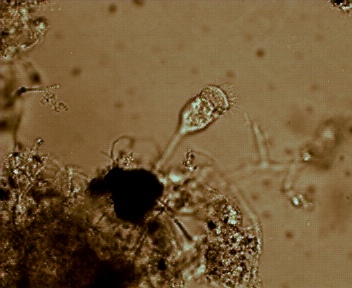 Wastewater treatment plants are complex ecosystems with many forms of microscopic life. While bacteria are the primary workhorses, breaking down pollutants, a diverse community of other microorganisms, particularly protozoa, plays a crucial role. These tiny creatures aren’t just passengers; they are vital bioindicators, acting like microscopic canaries in the coal mine, telling operators how healthy and effective the treatment process is.
Wastewater treatment plants are complex ecosystems with many forms of microscopic life. While bacteria are the primary workhorses, breaking down pollutants, a diverse community of other microorganisms, particularly protozoa, plays a crucial role. These tiny creatures aren’t just passengers; they are vital bioindicators, acting like microscopic canaries in the coal mine, telling operators how healthy and effective the treatment process is.
Why we rely on protozoa to monitor biological wastewater treatment systems
Many wastewater plants use an “activated sludge” process. This involves cultivating a rich mixture of bacteria and other microbes (the “sludge”) in aerated tanks. These microbes consume the organic waste in the sewage. Keeping this microbial community healthy, active, and balanced is key to effectively cleaning the water.
Monitoring the health of the activated sludge ecosystem can be tricky. Chemical tests provide snapshots, but observing the microbial community offers a dynamic view of the process’s biological condition. Protozoa are particularly useful because:
- Sensitivity to Conditions
Different types of protozoa thrive under specific environmental conditions. Their presence, absence, or relative abundance directly reflects factors like:- Food Availability: Primarily the concentration of bacteria.
- Dissolved Oxygen (DO) Levels: Crucial for aerobic respiration.
- Sludge Age: How long the microbial solids stay in the system.
- Toxicity: Sensitivity to harmful chemicals entering the plant.
- Position in the Food Web
Most protozoa feed on bacteria. Their types and numbers indicate the state of the bacterial population (dispersed vs. clumped in ‘flocs’) and the overall food load. - Ease of Observation
Compared to identifying specific bacterial species, protozoa are relatively large and distinct under a standard laboratory microscope, making routine checks feasible for plant operators.
Meet the Microscopic Monitoring Crew: Key Protozoa Groups
Operators look for specific groups of protozoa, as each tells a different story about the sludge environment:
- Amoebae
These simple, shape-shifting protozoa move using pseudopods (“false feet”). Large numbers of amoebae, especially naked forms (without shells), often indicate high bacterial loads and unstable conditions, typical during plant start-up or following an “upset” (like a sudden surge in waste). They thrive when food is abundant, and competition is low. - Flagellates
Small and fast-moving, using whip-like flagella for propulsion. Like amoebae, high numbers of flagellates usually point to high concentrations of dispersed bacteria (high food load) and often young sludge age or sometimes low dissolved oxygen. They are common in the early stages of sludge development or stress conditions. - Free-Swimming Ciliates
These protozoa are covered in hair-like cilia used for movement and feeding. They swim freely through the water, consuming dispersed bacteria. Their presence indicates improving conditions compared to amoeba/flagellate dominance, suggesting active bacterial removal but still a relatively high food load or less mature sludge. - Crawling Ciliates
These ciliates primarily move along the surfaces of the microbial clumps (“flocs”). They graze on bacteria attached to the floc. Their dominance signals good floc formation, a maturing sludge, and healthy bacterial activity within the flocs. - Stalked Ciliates
These sophisticated ciliates attach themselves to floc particles via a stalk. They use cilia around their “mouth” to create water currents, drawing in bacteria. Abundant stalked ciliates are a hallmark of a stable, healthy system with good clarification (low suspended solids in the treated water), optimal dissolved oxygen, and a well-established, mature sludge. They are often the desired dominant group in a well-performing plant. - Suctorians
Often stalked, these unique protozoa don’t use cilia for feeding as adults. Instead, they have tentacles to capture other protozoa, mainly free-swimmers. Their presence indicates a very stable, older sludge environment where bacterial food might be becoming scarce, forcing predation on other protozoa.
Beyond Protozoa: Other Important Indicators
While protozoa are key, operators also note other microorganisms:
- Rotifers
Multicellular animals, more complex than protozoa. They indicate very stable, well-oxygenated conditions and older sludge age, often associated with very clear final effluent. - Nematodes (Roundworms)
Their presence usually signals very old sludge and low food conditions. - Annelids (like Bristleworms)
Similar to nematodes, indicating very old sludge. While indicative of stability, excessive numbers might suggest the sludge is getting too old.
Putting It All Together: A Holistic View
By regularly examining a sample of activated sludge under the microscope and identifying the types and relative abundance of these indicator organisms, wastewater operators gain invaluable insights. A shift in the community – say, from predominantly stalked ciliates to flagellates – can signal an incoming problem (like a toxic shock or organic overload) long before chemical tests show significant changes or treatment efficiency drops. This a llows operators to make proactive adjustments to aeration, sludge return rates, or other process controls.
If you need a printable indicator organism poster, we can send you a PDF & PNG files that can be printed for posting near your microscope. Just contact us in the comments form and I will get it over to you.

As I am responsible for the supervision of a wastewater treatment plant in Brazil, I would be very grateful to receive a PDF & PNG files.